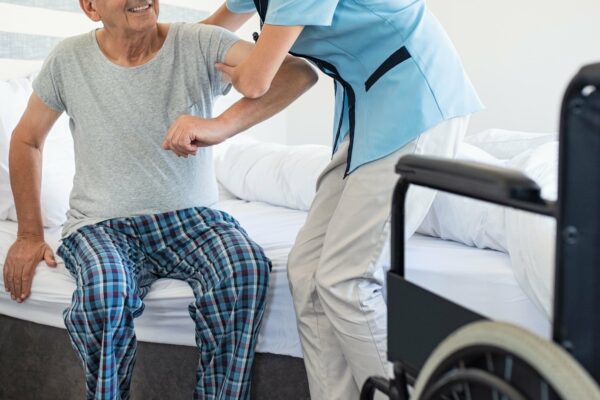Introduction
In moments of dilemma, having the best tools can suggest the distinction between life and death. Cardiopulmonary resuscitation (CPR) is a vital skill that every person must discover, especially because it can conserve lives during emergency situations. This is especially real in Australia, where unexpected heart events, drowning cases, and sports-related heart attacks are however usual. Beyond understanding just how to perform CPR, understanding what necessary CPR devices you should have on hand is similarly important. This post explores the vital tools and tools required for efficient CPR practices in Australia.
Essential mouth-to-mouth resuscitation Equipment in Australia: What You Should Have on Hand
When it involves lifesaving procedures like mouth-to-mouth resuscitation, having the right tools easily available is an absolute requirement. The adhering to things are important for any individual seeming prepared for emergency situations:
1. Automated Outside Defibrillator (AED)
An AED is a portable gadget that can assess heart rhythms and supply an electrical shock if needed. It's important in cases of abrupt cardiac arrest.
- Benefits of AEDs: Quick accessibility to an AED significantly boosts survival rates. Where to Find AEDs: Many public areas in Australia are equipped with AEDs, including mall and schools.
How to Make use of an AED? Using an AED is simple:
Turn on the device. Attach pads to the person's bare chest. Follow voice prompts for evaluation and shock delivery.2. Mouth-to-mouth Resuscitation Masks and Barriers
These tools secure both the rescuer First Aid Course in Wagga Wagga - firstaidpro.com.au and sufferer throughout mouth-to-mouth resuscitation.
- Types of Masks: Pocket masks with one-way valves are popular choices.
3. Emergency Treatment Kit
An extensive first aid package should consist of standard medical materials like bandages, antiseptics, gloves, and scissors.
- Contents of an Excellent Emergency Treatment Kit: Adhesive bandages Sterile gauze pads Antiseptic wipes Disposable handwear covers
4. Personal Protective Equipment (PPE)
Gloves, certified first aid course Wagga Wagga masks, and face guards shield against contagious illness throughout resuscitation efforts.
5. Educating Manikins
Manikins are necessary for practicing CPR strategies successfully and accurately.
- Importance of Practice: Regular training makes sure readiness when real emergencies occur.
6. Online Resources for Training
Accessing online training courses can aid familiarize yourself with both CPR techniques and the current guidelines.
Understanding CPR Techniques
Knowing how to execute mouth-to-mouth resuscitation efficiently can substantially influence its success rate:
7. How to Do CPR?
CPR involves upper body compressions and rescue breaths:
- Compression Depth: The right compression deepness for adults has to do with 5-6 cm.
Table: Compression Depth Guidelines
|Age|Compression Depth|| ------------------|------------------|| Adults|5-6 centimeters|| Youngsters (1-8)|4-5 centimeters|| Babies (<< 1 year)|3-4 cm|</p>

8. Infant CPR Technique
This method varies significantly from grown-up procedures as a result of the fragility of babies:
- Use two fingers for compressions at a deepness of concerning 3-4 cm.
9. Advanced Resuscitation Skills
For healthcare providers or those seeking advanced training, abilities such as intubation or IV treatment might be necessary.
Special Scenarios in CPR
Certain situations call for adjusted strategies or additional factors to consider:
10. Sports-Related Heart Arrests
Athletes might experience heart occasions in different ways as a result of physical exertion.
11. Drowning Victims
CPR strategies may need alteration based on water inhalation results:
- Focus on rescue breathing before upper body compressions.
Household mouth-to-mouth resuscitation Readiness
Being prepared in the house can save lives during emergency situations:
12. Creating a Family Emergency Plan
Discuss emergency protocols with relative regularly.

13. Storing Essential Equipment
Keep your first aid set, AED, and other important equipment easily accessible at home.
Workplace Emergency Plans
Every office need to have a clear technique pertaining to heart emergencies:
14. Creating Office Guidelines
Establish clear treatments for staff members to adhere to during an emergency scenario involving heart arrest.
Local Resources for Training and Certification
Taking activity starts with education and learning:
15. Local Mouth-to-mouth Resuscitation Classes in Australia
Many companies provide courses customized to different target markets-- be it parents or healthcare professionals.
List of Organizations Offering Classes
- St John Ambulance Red Cross Australia
16. On The Internet Mouth-to-mouth Resuscitation Qualification Courses in Australia
Online alternatives make it easier than ever before to find out crucial lifesaving abilities at your own pace.
Understanding Certification Validity
Keeping your skills present is equally as crucial as understanding them initially:

17. CPR Certificate Validity in Australia
Most accreditations require renewal every three years; check specific program needs for details.
FAQs
Q1: How usually should I freshen my mouth-to-mouth resuscitation training?
It's recommended to rejuvenate your abilities each to 2 years as a result of updates in guidelines or techniques.
Q2: Can anybody execute CPR?
Yes! Anybody can execute hands-only mouth-to-mouth resuscitation despite their qualification status; however, skilled people will certainly be much more effective.
Q3: What's the distinction in between grown-up and infant CPR?
The major distinction depends on compression deepness and technique utilized; adult compressions are much deeper than baby compressions due to dimension differences.
Q4: Do I require special tools for doing infant CPR?
Not necessarily-- typical emergency treatment kits are enough; nevertheless, expertise about appropriate strategies is crucial.
Q5: Is it required to use rescue breaths during CPR?
While hands-only compression has been shown efficient for adults experiencing out-of-hospital cardiac arrests, rescue breaths continue to be critical throughout details situations like drowning occurrences or pediatric emergencies.
Q6: Where can I discover regional courses or accreditation options?
Inspect recreation center or companies like St John Ambulance or Red Cross; they often provide classes across Australia!
Conclusion
Being prepared with important mouth-to-mouth resuscitation tools not only equips individuals yet also promotes an area ready to react properly throughout emergencies. With sources readily available throughout Australia-- from regional classes to on-line certifications-- there's no excuse not to outfit yourself with these lifesaving abilities. Bear in mind that discovering how to do effective CPR indicates being proactive concerning security-- not simply for ourselves yet likewise for those around us that may one day rely upon our readiness during a moment of crisis!